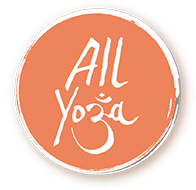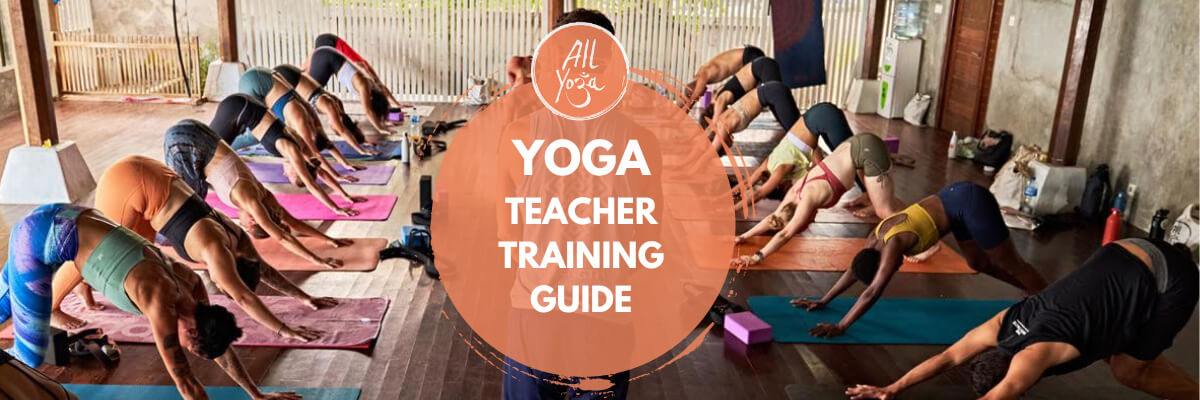Best Yoga Teacher Training Guide 2024: How to Become a Yoga Instructor
Without proper qualifications, one cannot safely and effectively teach yoga online or in person. I’ve seen people who rushed the process or skipped some steps, leading to inadequate preparation and putting the well-being of students at risk. Coming from experience, I’m sharing a comprehensive guide on how to become a yoga instructor.
How to Become a Yoga Instructor
To become a yoga instructor, you must have a regular personal practice, complete a 200-hour yoga teacher training program, get certified, register with Yoga Alliance, and commit to ongoing learning. It also helps to specialize in a particular style so you can excel at the written or practical tests.
You might feel overwhelmed by the many choices of Yoga certification schools, yoga teacher training programs or even online yoga teacher training.Finding the best yoga certification course which will meet all your expectations can seem like a daunting task. It takes more preparation and research than searching “yoga certification near me” in Google…
Steps in Becoming a Qualified Yoga Teacher
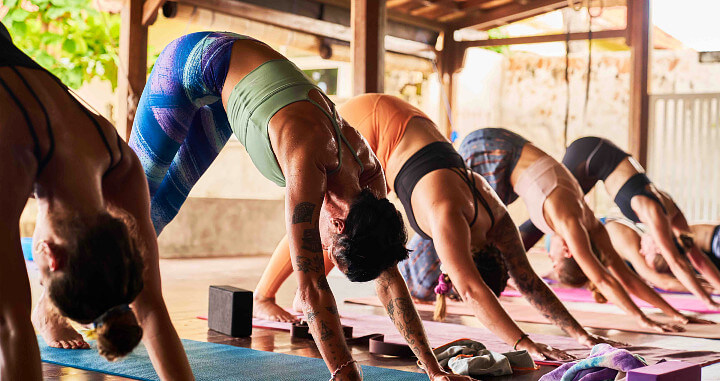
Step 1: Do Yoga Regularly
-
Before being able to teach yoga to students, you need to be a dedicated yoga student!
- Hatha has become a ‘catch-all’ category to describe the general ‘flow’ yoga that you can find in most studios in the West. In general, though, Hatha yoga is slower-paced than most vinyasa classes, and poses are usually held for several breaths.
- Vinyasa is a ‘flowy’ popular style of yoga among students. Often accompanied by music, vinyasa classes flow from one posture to another without holding the poses for too long. This emphasizes on combining breath and movement (one breath for one movement) in a meditative yet usually fast-paced routine.
- Ashtanga-Vinyasa descended from the Ashtanga lineage, an ancient philosophy over 5,000 years old, developed in Mysore, India, by the late Pattabhi Jois. The Ashtanga Vinyasa method is defined by connecting breath with movement in a flowing sequence.
Step 2: Complete a 200-Hour Yoga Teacher Training Program
-
Students should seek a Yoga Alliance-registered program to ensure adherence to industry standards, covering philosophy, anatomy, and methodology.
- RYT: Registered Yoga Teacher is a credential exclusive to Yoga Alliance, with RYT-200 requiring completion of a 200-hour registered training. RYT-500 indicates either a 500-hour program or a combination of 200 and 300-hour courses.
- E-RYT: Experienced Registered Yoga Teacher is a newer Yoga Alliance credential featuring E-RYT 200 and E-RYT 500. You can obtain two years of post-training with an additional requirement of 1,000 teaching hours with an RYS-200 registration.
- CYT: Certified Yoga Teacher is a general designation, not specific to Yoga Alliance’s directory, contrasting with RYT. This is exclusively for those registered with the Yoga Alliance.
Step 3: Get Certified
At the end of a 200- or 500-hour yoga teacher training, students need to pass a final exam to get certified. A yoga studio will need results from your written test, a practical test, or both.
Step 4: Register With Yoga Alliance
-
This isn’t a legal requirement, although many employers prefer teachers who are Registered Yoga Teachers (RYTs) with the Yoga Alliance.
- Yoga Alliance, the largest global registration body for yoga schools and teachers, differs from traditional accreditation bodies and does not directly certify schools.
- While Yoga Alliance doesn’t provide certification, schools must align with their standards, submitting their curriculum for approval to offer Yoga Alliance-registered training.
- To register with Yoga Alliance, individuals need to attend training from a registered school with Yoga Alliance-registered teachers. This ensures compliance with specified hours for anatomy, practice, and technique.
Step 5: Consider Taking Advanced Yoga Training
Once you’ve got some experience, you might want to pursue a 300-hour or 500-hour certification from Yoga Alliance to deepen your knowledge and expand your skills.
Remember, becoming a great yoga instructor is about more than just a yoga certification. It’s about a commitment to learning and a passion for helping your students grow.
Common Concerns in Becoming a Registered Yoga Teacher
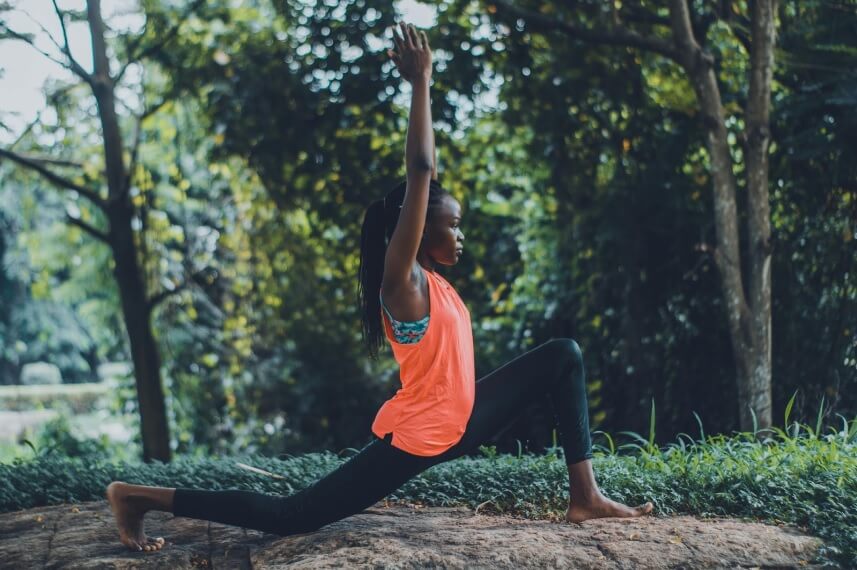
-
Regardless of whether it’s for online or in-person classes, aspiring instructors often ask me about these concerns in navigating potential challenges on how to become a yoga instructor.
- Training prerequisites: Contrary to what you might think, you don’t need to have been practicing yoga for years before joining a yoga teacher training. The most important thing is the commitment to continuing education. Generally, I recommend at least six months of consistent yoga before embarking on in-person or online training.
- Age: There is no age limit for joining an online course for yoga instructors. As long as you have the physical fitness to cope with a yoga certification course, then you should not feel put off or think you’re too old.
- Gender: While the majority of yoga practitioners these days are women, this really depends on where you teach yoga. Historically, the most famous yoga teachers in India were men. Nowadays, there are several prominent male teachers with large social media followings.
- Certifications: You’ll want to start with a 200-hour Yoga Teacher Training (YTT) program certified by the Yoga Alliance. This is the industry standard and will give you a solid foundation in yoga philosophy, poses, and techniques. After you’ve got your certificate, you’ll need to register with the Yoga Alliance as an RYT.
- Career opportunities: You will be ready to start teaching in a yoga studio upon graduating from your yoga certification training. You must be Yoga Alliance-certified to become a trainer. There is a yearly membership fee, and it requires continuing education to retain your Yoga teacher training.
- Location: Nowadays, students can pretty much find online and in-person yoga teacher trainings in every country! However, if you’re after a tropical climate, beautiful scenery, and a truly unforgettable experience, I recommend yoga teacher training in Bali or a Thailand yoga course.
- Budget: Besides the course itself, travel costs, and your accommodation, there are a couple of other things you need to spend money on. For example, if your yoga instructor training does not include food (except perhaps a light lunch, fruit, or snacks ( such as dates, nuts, refreshments, etc.), you’ll need to budget for daily breakfasts and dinners.
- Visas: Check whether you need a visa to travel to the country you’ve chosen for your training, and apply for it in advance.
- Laundry: Students will sweat a lot and may need to change clothes twice a day (or more!), so you may need to pay to get your clothes washed several times a week. The cost varies depending on your hotel or the location of the training.
- Vaccines: This depends on the country you’re training in, the guidelines of your home country, and your preferences. Depending on your home country, you may need to pay for each vaccine you need, so be sure to check in advance.
- Onward travel: You will need extra money for any additional accommodation, food, and travel if you decide to stay after your training or travel afterwards.
- Insurance: You’ll eventually need to secure insurance to teach yoga, particularly for in-person classes at a yoga studio.
- Personal confidence and skills: It’s expected to be nervous about your first in-person or online class. Public speaking is the greatest fear among 75% of people, especially in front of students! You can achieve this through experience and group activities with the community.

Everyone’s bodies are different, and not all bodies will be able to do certain poses. And that’s completely normal. As long as you have a good level of fitness/stamina and a willingness to challenge yourself, then you are definitely ‘good enough’ to join a yoga teacher training.
Zoë Mote, All Yoga Course coordinatorIs the school registered with the Yoga Alliance? Whether it’s an online or in-person course, make sure you have researched the registered yoga school and feel confident in the quality of your education. Check out our blog about the 9 best yoga teacher training in Bali.
How to Pick the Best Yoga Classes
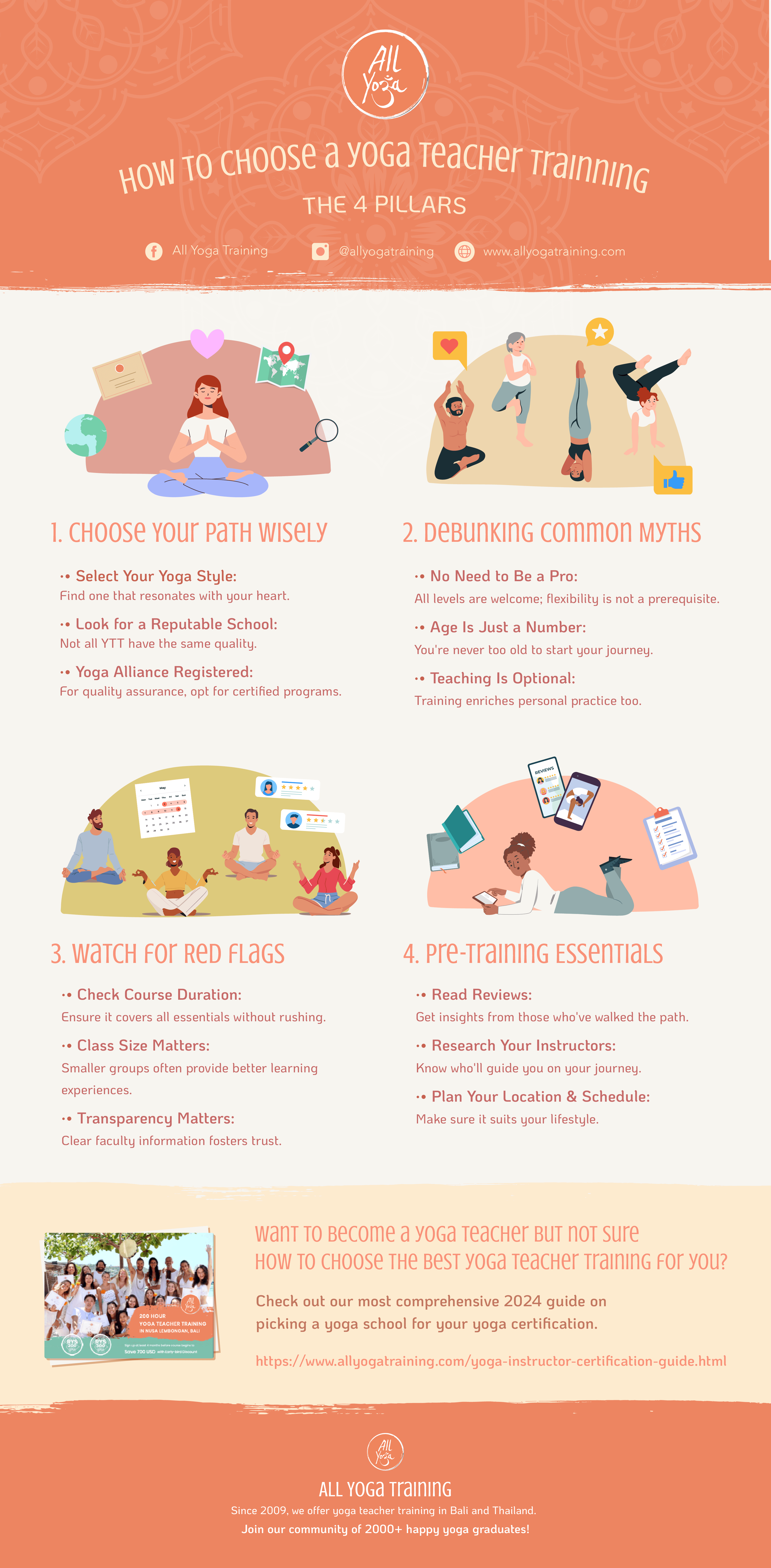
Congratulations! You’ve taken the leap and decided to undertake yoga teacher training. Here are the important aspects to consider when choosing the right in-person or online training to teach yoga.
- Identify your objectives: Are you looking to teach or improve your skills? Do you want more intense, retreat-style training or are you looking to make new friends in a fun, laid-back setting? All of this will influence the type of teacher training for yoga.
- Know the yoga style you want to train in: When uncertain, choose a more generic style of yoga for your 200- or 500-hour yoga teacher training, one that gives you a robust and general foundation. I also recommend trying a few different styles, like Rocket Yoga.
- Check the school’s experience: It’s in your best interest to choose a reputable school with a proven track record from Yoga Alliance rather than a new school that may not have a great deal of experience offering a yoga certification class.
- Look into the faculty: Having two or more teachers per training is also really important, as you learn from different experiences and points of view. Some Yoga Alliance-registered schools may also have guest teachers for specialised modules such as anatomy. Look for teachers who are internationally well-respected experts in their field.
- Prepare your budget: The cost of teacher training for yoga varies wildly, from around $1200 to $5000 (USD) or more. This generally only includes the tuition fees and not accommodation, food, or anything else, so you need to work out your budget and find a training that works for you.
- Check the training schedule: Most types of yoga certification courses last between 23 and 28 days (three to four weeks). This is known as intensive yoga teacher training, where you will be studying around 12 hours a day, with one or two days off in the entire course.
- Know the school’s location: Unless you have decided to do non-intensive training in the same country you live in, generally, you will be traveling abroad for your training. It’s up to you where in the world you choose to go.
- Verify the school’s accreditation with Yoga Alliance: Yoga Alliance is an internationally recognized yoga institution and the governing body in the field of yoga. Many schools and trainings are Yoga Alliance accredited, which means students can expect a certain standard of learning. In addition, the school’s curriculum meets Yoga Alliance’s minimum requirements.
- Examine the curriculum: Although Yoga Alliance requires that schools meet the basic standard for what should be included in a training curriculum, there is quite a lot of room for flexibility and for each school to put its unique perspective into the curriculum. It’s also worth determining whether the school favors theory over practical application.
In-Person vs Online Trainings
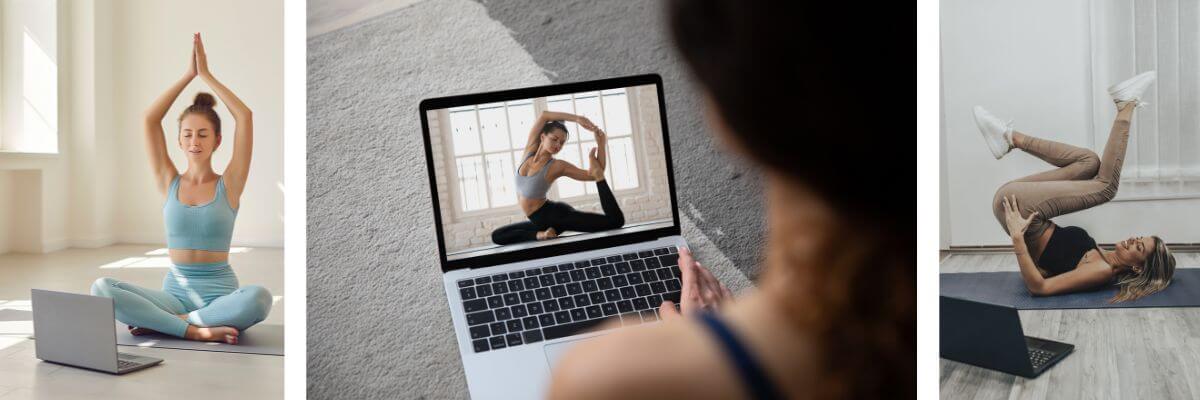
Entering the realm of online yoga teacher training offers a myriad of choices, from the best online yoga teacher training courses in Vinyasa and Hatha to specialized options like the best online yin yoga teacher training and those accredited by the government of India.
The shift from in-person to online training became prominent during the COVID-19 pandemic. This led to a boom in online schools, making it easier for aspirants to learn how to become a yoga instructor online.
Wenlin Tan, a Qigong & Yoga Specialist with over 15 years of experience, shares her thoughts on these two types of trainings, and what she thinks the best option is:
In-person trainings offer unparalleled connection and opportunity to learn from first-hand experience and to clarify questions. Furthermore, it offers the opportunity for hands-on practice training and tactile learning – hands-on assists, which is impossible to do online.
Now, it is not uncommon to find hybrid trainings with a mixed hybrid format, including a fully online self-paced module and an in-person training module, which in my opinion, brings the best of both worlds.
Understanding the Pros and Cons of Online Training
Pros of online trainings include flexibility and cost-effectiveness. Students may also receive unique course opportunities, such as training with renowned instructors or exploring niche styles.
However, the challenges of online programs include maintaining motivation, potential feelings of isolation, and navigating the practical elements of instructing students. When considering an online 200- or 500-hour yoga teacher training program, it’s vital to balance these aspects and assess whether the benefits align with individual goals and learning preferences.
Choosing Online Training for Yoga Instructors
Choosing online programs over in-person classes to get a yoga teacher training certificate involves considering several factors, including the yoga style and budget. You’ll also need to consider accreditation—such as Yoga Alliance approval or a specialized online yoga certification course by the government of India—and the chosen school or instructors.
Prospective students might explore our hand-picked 10 best online yoga teacher training for an enriched understanding of yoga’s history and lineage. Whether you’re seeking a 200-hour yoga teacher training online or a specialized certification, exploring online options requires careful consideration of individual needs, goals, and preferences.
Yoga Teacher Training Red Flags
Identifying warning signs is crucial to avoiding potential pitfalls and ensuring the chosen online training aligns with the standards necessary for becoming a proficient and respected yoga instructor.
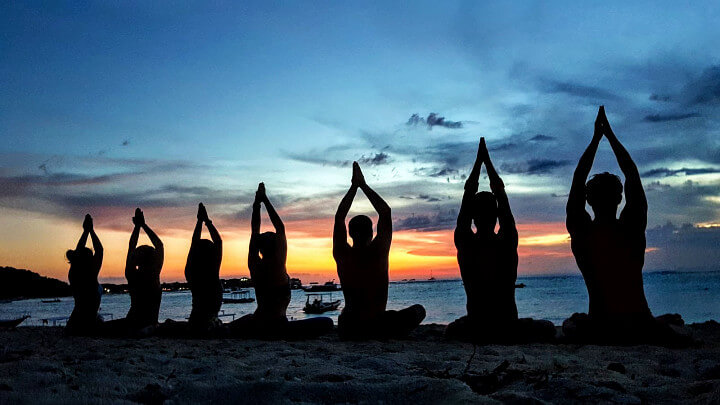
- The trainers are not dedicated yoga practitioners: It would be slightly worrying if the faculty don’t take time for their own course or are not that involved in yoga.
- Unclear faculty: It would also be worrying if you weren’t sure exactly who will teach the online course.
- Big group size: The ideal size for yoga classes is around 16 to 22 students per yoga course. The problem with more than 25 students per training is that you might feel like a number. There may also be less personal attention or individual contact time with your teachers, time or opportunity to ask questions, offer your opinion, and make sure you understand everything.
- Lots of days off: While this may sound like a good thing (!), the problem with too many days off or only a few hours of training each day is that it becomes more like a holiday than a teacher training.
- Multi-style yoga training (or no clear style): Suppose a school only teaches ‘multi-style’ courses, or it’s unclear from the description exactly which style(s) you’ll be learning. This can indicate that the school (or teachers) are not experts in one distinct style and/or that the training is not so focused on the practical part.
- Only one teacher: Even if they had the best teacher in the world, the fact that there is only one teacher would be worrying because we learn best by being exposed to different experiences, backgrounds, and styles.
- Very few reviews: When there aren’t very many reviews or testimonials available, the school is either very new and hasn’t yet trained many people, or it hasn’t received good enough feedback that it is willing to share.
Common Myths About Getting a Yoga Teacher Training Certificate
Now that I’ve answered many important questions, I’m busting some common myths around yoga teacher training so that you know what to expect.
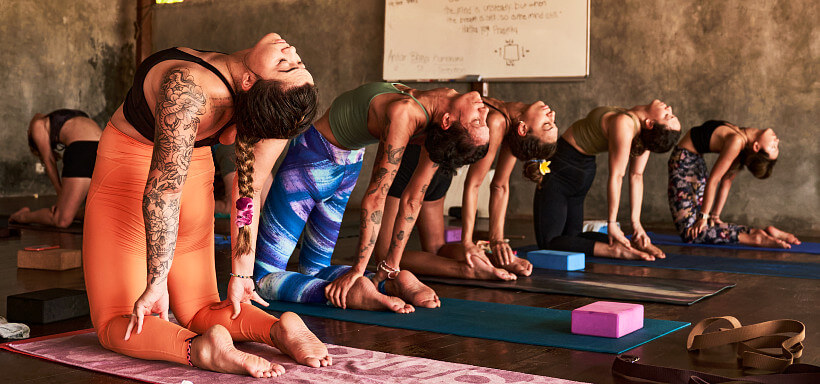
- You need to be able to do handstands and get your legs around your head to join a course: It doesn’t matter whether you can do a handstand or not, nor how flexible or strong you are. As long as you have a willingness to learn. You’ll discover that you don’t always need to be able to do a pose yourself to be able to teach it.
- You must do yoga for many years before enrolling in a yoga teacher training: You don’t need to have been doing yoga every day for the last five years before you can join a yoga teacher training program! Around three to six months or at least three times a week) is required.
- You need to be skinny/have abs/be super fit: Bodies come in all shapes and sizes! It’s essential as an instructor to be mindful of different bodies, not only when it comes to adjusting.
- Yoga teachers are vegans: You will not be shamed for not being vegan during yoga teacher training. However, the food served at the training is often vegetarian.
- Everyone will be young, slim females: This is another misconception exacerbated by social media images of young, slim women doing fancy poses. Still, it doesn’t represent the diversity of practitioners or the diversity of people who choose to do online training programs.

In my experience as a Yoga Trainer, it’s essential to realize that all bodies are unique, and some bodies won’t be able to do certain poses. As you get this, you’ll be an even more compassionate and relatable teacher and be able to make your classes more inclusive. And after all, the Yoga poses are just a way to learn more about yourself!
Annie Au Yoga, Founder of Soulful Yin YogaIn-Demand Yoga Teacher Training Programs
Now that you know what you want from a yoga certification course, and what to look out for, why not check out the 200-hour All Yoga Teacher Training before you make your final decision? Here are some of the highlights:
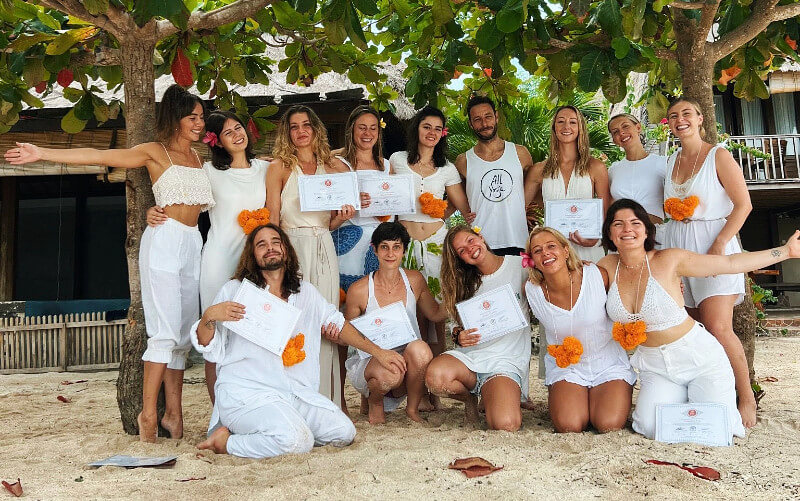
- Highly experienced leaders in the yoga instructor certification course industry: All Yoga has been training yoga teachers for over 10 years, certifying hundreds of successful graduates each year. With so much experience and feedback from so many students, the course has been improved and refined over the years to deliver the best quality training to our students.
- Small class sizes: All Yoga limits the number of students per yoga teacher training to a maximum of 20 to 22 students. This ensures personalized attention and guidance for each student, as well as hands-on support where students can develop close bonds with their peers.
- Train in Ashtanga-Vinyasa yoga: We have chosen to focus on Ashtanga-Vinyasa yoga because it gives you a strong foundation in knowledge (including history and philosophy). This can also improve your strength, flexibility and discipline (your focus). Since you learn a set sequence, training in Ashtanga-Vinyasa also gives you a foundation from which to create your own sequences, as well as the confidence to teach students immediately.
- Stunning locations: All Yoga teacher trainings take place in unique locations on the tropical islands of Bali and Thailand. The shalas are reserved exclusively for yoga teacher trainings so students can do yoga to the sound of the waves and explore the culture and beauty of these countries on their days off.
- International faculty of highly trained and experienced teachers: All Yoga’s teachers have been leading yoga teacher training for many years. We also bring in guest teachers and international experts in their field.
- Global network and community: Students have the opportunity to grow into an extended family of yoga lovers from all over the world. This support network remains in place even after graduation, as alumni are encouraged to share their successes with the community and are even provided with a platform to promote their own yoga courses through our website.
- For more information check out these articles:
- The 10 best yoga teacher trainings in 2024
- 10 Best Ashtanga yoga course in 2024
- Is 200 Hours enough to become a yoga teacher?
- 5 best Locations for a Yoga teacher training
Yoga Instructor Certification Checklist
You’re almost there! Before quitting your day job to become a yoga teacher and #liveyourbestlife (!), take a quick glance at our handy checklist to ensure you’re fully prepared and ready to go.
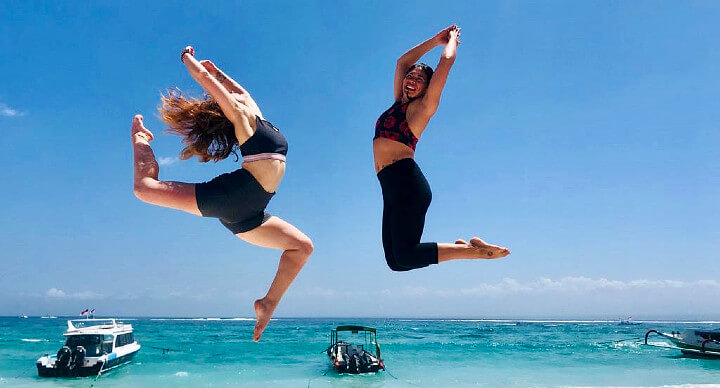
-
You’re almost there! Before you quit your day job to become a yoga teacher and #liveyourbestlife (!), take a quick glance at our handy checklist to make sure you’re fully prepared and ready to go…
- Fill in the training application form
- Save your spot with a deposit
- Book your flights
- Book any accommodation needed (check with the school what’s included first)
- Make sure you have the budget for food and laundry
- Transfer money into the correct currency (if you’re taking cash)
- Get visas if needed
- Get vaccines if needed
- Buy any books or required reading (the school should give you a list)
- Start practicing regularly three months before the training
- Try out the style you are training in!
- Prepare any medication you want to take with you
- Book an airport transfer or make sure you know how you’re getting to the place
- Pack your bags! Make sure you have adequate sun protection, yoga clothes, and any props you need
- Have an amazing time with the community 😊
Frequently Asked Questions
What Qualifications Do You Need to Be a Yoga Instructor?
To become a certified yoga instructor, you need a minimum of 200 hours of training from a registered yoga school, which covers philosophy, anatomy, teaching techniques, and practical teaching. Additionally, you must pass a final exam to get your certification.
How Long Does It Take To Be a Yoga Teacher?
It typically takes at least six months of consistent yoga plus four weeks for a 200-hour yoga teacher training program to become an instructor. Ongoing course training continues after initial certification.
If you’re considering an intensive yoga course, the usual duration is 22-26 days. After that, it’s all about practice, practice, practice. Remember, Yoga is a journey, not a destination!.
Important Note: Beware of intensive yoga teacher training course with less than 21 days as it is usually a sign of poor teaching quality and packed schedule. The ideal yoga course duration is 23-26 days.
Is It Worth Getting Yoga Certified?
Getting yoga certified requires investment, although being an in-person or online yoga instructor can be incredibly rewarding. Beyond financial gain, being a Yoga Alliance-certified teacher provides fulfilment, community, opportunities to transform lives, and incentives to deepen your skills.
Can I Still Join an In-Person or Online Yoga Teacher Training if I Am Pregnant?
Enrolling in yoga certification training when pregnant is not recommended unless you are an advanced and experienced practitioner, especially in the first trimester.
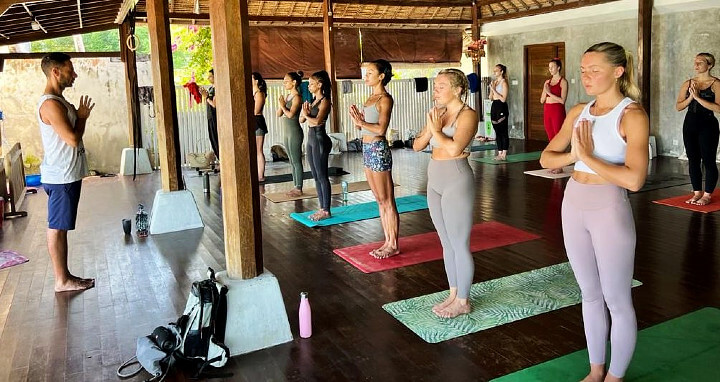
Conclusion
Embarking on the journey to becoming a yoga teacher requires dedication through each step of training, certification, and continued learning. Investing the time and effort to complete comprehensive training will ensure you share yoga’s gifts safely and effectively.
- If you’d like to dive deeper into any of these topics, check out these articles:
- The 7 most important requirements for a teacher training for Yoga
- 10 Best questions to ask before joining a YTT
- Is 200 Hours enough to become a yoga teacher?
- 5 best Locations for a Yoga teacher training
Read More Blogs
Want to Become a Yoga Teacher and/or
Deepen your Yoga Practice?
2 FREE EBOOKS FOR YOU:
- 20 things to know before choosing a yoga teacher training
- 7 tips to deepen your yoga practice right now
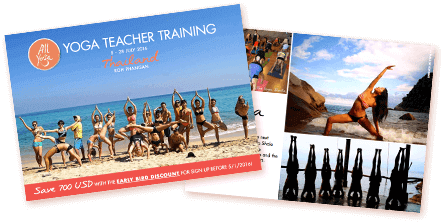
Copyright © 2024, All Yoga International ltd. All Rights Reserved
Privacy Policy